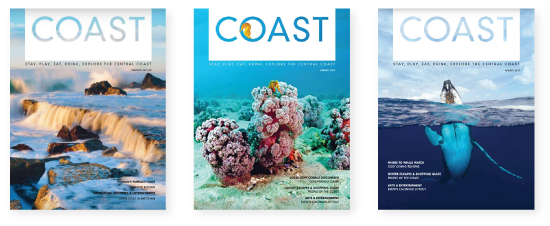With the threat of koalas becoming extinct in the wild within 30 years, the Pearl Beach Arboretum flora and fauna sanctuary, in collaboration with the University of Sydney, is teaming up with experts to support the Central Coast as a future home for fire-surviving koalas.
It’s said the Central Coast is ideally suited to being a major koala habitat. Central Coast Council has proposed a large-scale koala survey across the region and momentum is building around what locals call ‘The Koala Project’.
Why Pearl Beach? In the early 1990s, Pearl Beach suffered the huge loss of both its pine forest and koala colony in a bushfire. As a result, the Arboretum committee established a wildlife corridor and planted 30 eucalyptus species including the koalas’ favourites: Grey, Blue and Forest Red Gums, Swamp Mahogany, Scribbly Gum, Tallow, Bangalay and Sydney Peppermint. A sustainable colony needs between 100 and 400 trees per koala … that’s a lot of trees.
‘The best-case scenario would be to find, through extensive surveying, that koalas still live here, and to start the process of protecting them and educating the public’, says Ann Parsons, Vice President of the Arboretum Management Committee.
A good time for this is in spring when any male koalas can be heard bellowing in deep guttural growls. Ann explains the priority is to survey the area for tree scratches, scat, and physical sightings. The challenge is in sourcing experienced rangers, training volunteers, and funding koala detection dogs. The Crommelin Native Arboretum is a ‘museum of living trees’ that backs onto Brisbane Water National Park, and with no official sightings in Brisbane Water National Park since 2005, the extra help is vital.

Jake Cassar (see COAST Winter 2019 issue), founder of the Coast Environmental Alliance (CEA) confirms there have been 76 officially registered sightings since 2000 in Picketts Valley, Watagans, Bucketty, Mangrove Mountain, Cedar Brush Creek, Yarramalong, and even crossing George Downes Drive in Kulnura.
Locals have also confirmed their presence in Rumbalara Reserve, just a few hundred metres from the cafés and offices of Gosford CBD.
‘I would like to see the Central Coast established as the largest natural koala sanctuary in the world,’ Jake says. ‘We have all the right trees here to offer new homes to koalas from fire-ravaged areas.’
Jake is part of the Pearl Beach Koala Project team, bringing experience from Taronga Zoo, Walkabout Wildlife Park, and vast bushcraft knowledge. ‘To be part of a project that’s on the frontline battle against koalas becoming extinct is a great privilege. It’s certainly not something I take lightly.’
You can help by becoming an Arboretum annual member, volunteer at monthly working bees, or bring your family to explore this tree sanctuary that may become a home for the Central Coast’s new koala colony. Donate directly to support ‘The Koala Project’ at https://www.pearlbeacharboretum.org.au/koala-project/
Follow progress on Facebook @pearlbeacharboretum https://www.facebook.com/PearlBeachArboretum/
WORDS WHITNEY EDWARDS. MAIN PHOTO STEPHANIE DABEAU.
9 NEW JOEYS BORN AT AUSTRALIAN REPTILE PARK
Among the new koala joeys is ‘Ember’, whose name was chosen to represent a spark of hope since the bushfires that decimated wild koala populations. The bouncing baby boy is being hand-raised by resident koala whisperer, Hayley Shute, after Ember’s mother, Polly, suffered an infection from a laceration in her pouch possibly from a sharp stick or branch.
She was in extreme discomfort, and was not able to heal properly with Ember moving around inside her pouch. Keepers stepped in for an emergency intervention, and Polly was taken to Somersby Animal Hospital for surgery. She is currently healing well and is expected to make a full recovery.
The Australian Reptile Park has a population of over 40 koalas which continues to expand each year with their successful breeding program. The recent New South Wales Parliamentary inquiry found that habitat loss remains as the biggest threat to the species’ survival and the Reptile Park will continue its breeding program to protect this iconic, and now endangered, species.
Australian Reptile Park, Pacific Highway, Somersby https://reptilepark.com.au/






